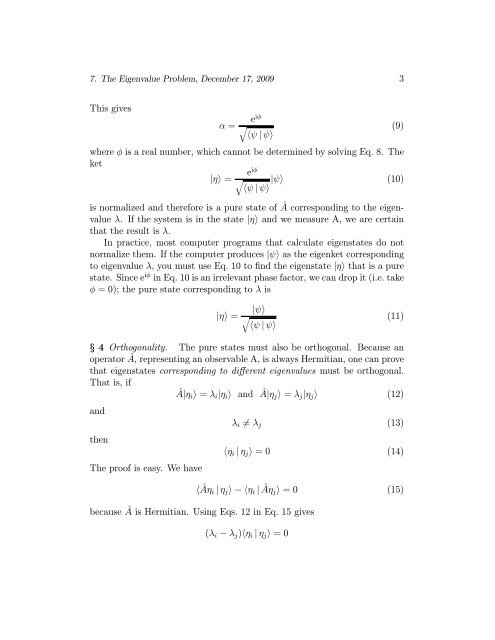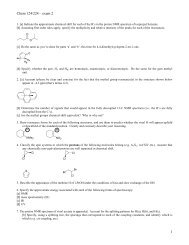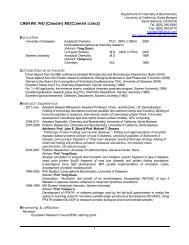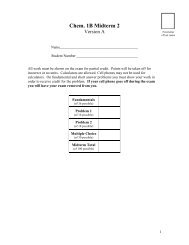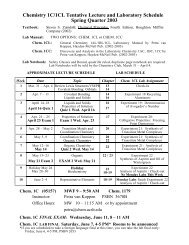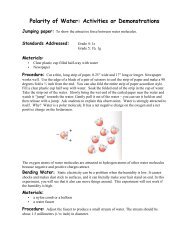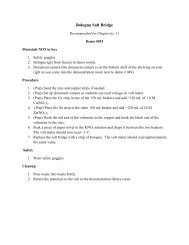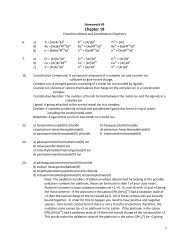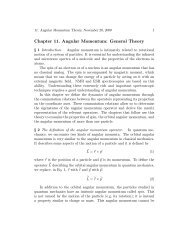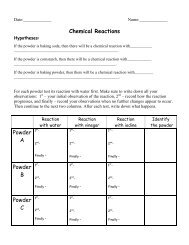Chapter 7. The Eigenvalue Problem
Chapter 7. The Eigenvalue Problem
Chapter 7. The Eigenvalue Problem
Create successful ePaper yourself
Turn your PDF publications into a flip-book with our unique Google optimized e-Paper software.
<strong>7.</strong> <strong>The</strong> <strong>Eigenvalue</strong> <strong>Problem</strong>, December 17, 2009 3<br />
This gives<br />
α =<br />
e iφ<br />
<br />
ψ | ψ<br />
(9)<br />
where φ is a real number, which cannot be determined by solving Eq. 8. <strong>The</strong><br />
ket<br />
e iφ<br />
|η = |ψ (10)<br />
ψ | ψ<br />
is normalized and therefore is a pure state of  corresponding to the eigenvalue<br />
λ. If the system is in the state |η and we measure A, we are certain<br />
that the result is λ.<br />
In practice, most computer programs that calculate eigenstates do not<br />
normalize them. If the computer produces |ψ as the eigenket corresponding<br />
to eigenvalue λ, youmustuseEq.10tofind the eigenstate |η that is a pure<br />
state. Since e iφ in Eq. 10 is an irrelevant phase factor, we can drop it (i.e. take<br />
φ = 0); the pure state corresponding to λ is<br />
|η =<br />
|ψ <br />
ψ | ψ<br />
(11)<br />
§ 4 Orthogonality. <strong>The</strong> pure states must also be orthogonal. Because an<br />
operator Â, representing an observable A, is always Hermitian, one can prove<br />
that eigenstates corresponding to different eigenvalues must be orthogonal.<br />
That is, if<br />
Â|η i = λ i |η i and Â|η j = λ j |η j (12)<br />
and<br />
then<br />
<strong>The</strong>proofiseasy.Wehave<br />
λ i = λ j (13)<br />
η i | η j =0 (14)<br />
Âη i | η j −η i | Âη j =0 (15)<br />
because  is Hermitian. Using Eqs. 12 in Eq. 15 gives<br />
(λ i − λ j )η i | η j =0


